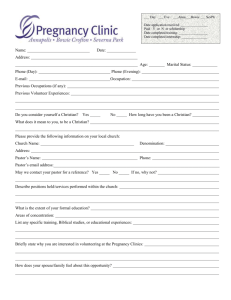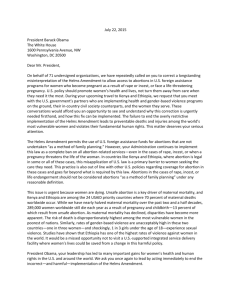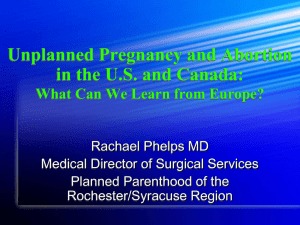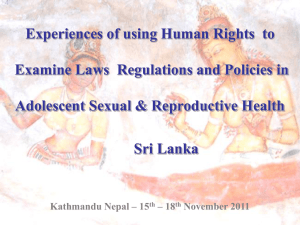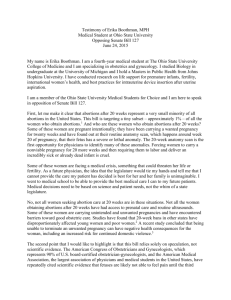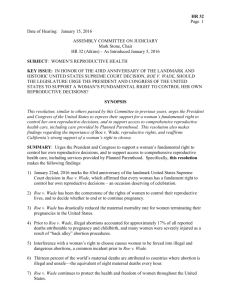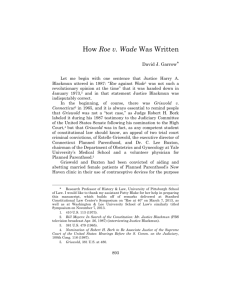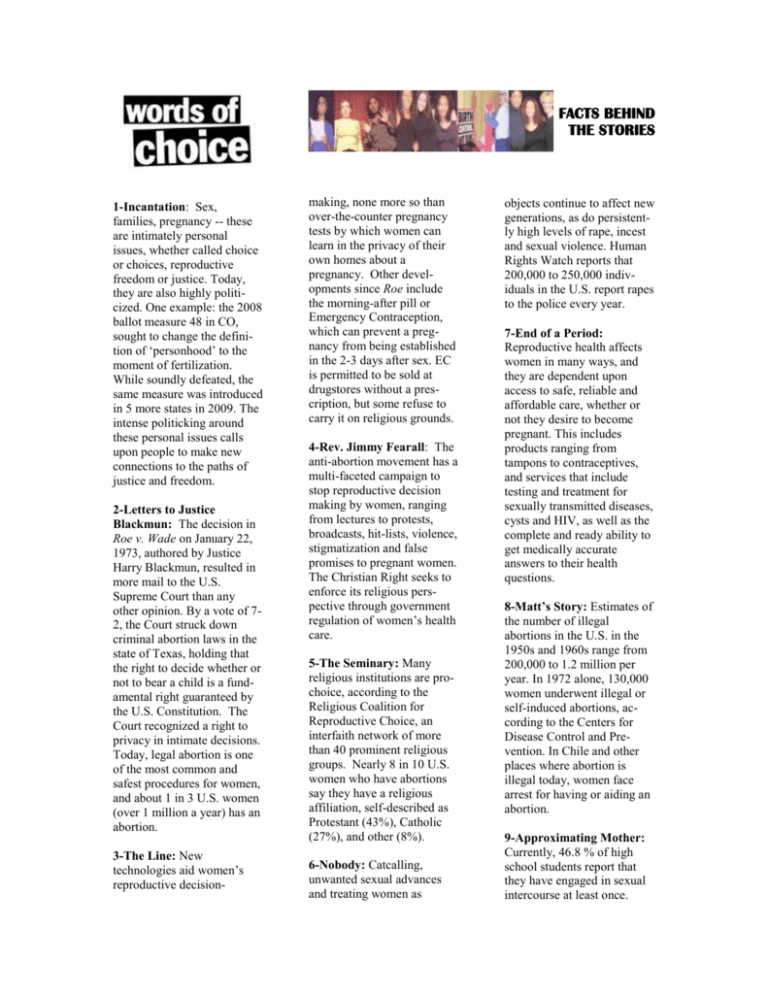
FACTS BEHIND
THE STORIES
1-Incantation: Sex,
families, pregnancy -- these
are intimately personal
issues, whether called choice
or choices, reproductive
freedom or justice. Today,
they are also highly politicized. One example: the 2008
ballot measure 48 in CO,
sought to change the definition of ‘personhood’ to the
moment of fertilization.
While soundly defeated, the
same measure was introduced
in 5 more states in 2009. The
intense politicking around
these personal issues calls
upon people to make new
connections to the paths of
justice and freedom.
2-Letters to Justice
Blackmun: The decision in
Roe v. Wade on January 22,
1973, authored by Justice
Harry Blackmun, resulted in
more mail to the U.S.
Supreme Court than any
other opinion. By a vote of 72, the Court struck down
criminal abortion laws in the
state of Texas, holding that
the right to decide whether or
not to bear a child is a fundamental right guaranteed by
the U.S. Constitution. The
Court recognized a right to
privacy in intimate decisions.
Today, legal abortion is one
of the most common and
safest procedures for women,
and about 1 in 3 U.S. women
(over 1 million a year) has an
abortion.
3-The Line: New
technologies aid women’s
reproductive decision-
making, none more so than
over-the-counter pregnancy
tests by which women can
learn in the privacy of their
own homes about a
pregnancy. Other developments since Roe include
the morning-after pill or
Emergency Contraception,
which can prevent a pregnancy from being established
in the 2-3 days after sex. EC
is permitted to be sold at
drugstores without a prescription, but some refuse to
carry it on religious grounds.
4-Rev. Jimmy Fearall: The
anti-abortion movement has a
multi-faceted campaign to
stop reproductive decision
making by women, ranging
from lectures to protests,
broadcasts, hit-lists, violence,
stigmatization and false
promises to pregnant women.
The Christian Right seeks to
enforce its religious perspective through government
regulation of women’s health
care.
5-The Seminary: Many
religious institutions are prochoice, according to the
Religious Coalition for
Reproductive Choice, an
interfaith network of more
than 40 prominent religious
groups. Nearly 8 in 10 U.S.
women who have abortions
say they have a religious
affiliation, self-described as
Protestant (43%), Catholic
(27%), and other (8%).
6-Nobody: Catcalling,
unwanted sexual advances
and treating women as
objects continue to affect new
generations, as do persistently high levels of rape, incest
and sexual violence. Human
Rights Watch reports that
200,000 to 250,000 individuals in the U.S. report rapes
to the police every year.
7-End of a Period:
Reproductive health affects
women in many ways, and
they are dependent upon
access to safe, reliable and
affordable care, whether or
not they desire to become
pregnant. This includes
products ranging from
tampons to contraceptives,
and services that include
testing and treatment for
sexually transmitted diseases,
cysts and HIV, as well as the
complete and ready ability to
get medically accurate
answers to their health
questions.
8-Matt’s Story: Estimates of
the number of illegal
abortions in the U.S. in the
1950s and 1960s range from
200,000 to 1.2 million per
year. In 1972 alone, 130,000
women underwent illegal or
self-induced abortions, according to the Centers for
Disease Control and Prevention. In Chile and other
places where abortion is
illegal today, women face
arrest for having or aiding an
abortion.
9-Approximating Mother:
Currently, 46.8 % of high
school students report that
they have engaged in sexual
intercourse at least once.
Annually, over 250,000 teens
under 18 become pregnant in
the U.S.; 82% of these
pregnancies are unintended.
wanted’ posters and assassinations. In May 2009, Dr.
George Tiller was murdered
point-blank by an antiabortion zealot.
10-Opposing Arguments:
Crisis pregnancy centers have
proliferated across the U.S.
These outposts, evangelical
in nature, are operated by
conservative religious groups
that use shame, guilt, fear,
pressure, false information
and deception to convince
women not to have abortions.
From 2000-2008, they
received millions of dollars in
government funding.
14-On the Hill: Efforts to
restrict reproductive rights
come in many forms. Antiabortion legislators used
healthcare reform as a tool
for inscribing additional
barriers to women’s equal
ability to access abortion
services. Anti-abortion
crusaders have pushed laws
through Congress, starting
with the Hyde Amendment in
1976 that had the effect of
making abortion widely
unavailable to women of
limited economic means,
while Rep. John Boehner and
Rep. Bart Stupak secured
significant concessions from
Congress and the president in
healthcare legislation, the
effects of which will be felt
by the next generation of
women and men.
11-Kathy: Although the
Catholic Church opposes
abortion and birth control,
only 25% of Catholics
believe that church leaders
should have the final say-so
on an abortion decision.
12-Jana: Autonomy is
decision-making by women
has been hard to come by.
For centuries women were
seen as the “property” of
their husbands or fathers, and
were not given the power
over basic decisions, such as
whether to marry, have
children, work, spend money,
buy property or make moral
decisions. Jana Mackey, a
young woman in Kansas,
understood this clearly.
Sadly, she was murdered by a
violent ex-partner in 2008.
She was 25.
13-Siege: Doctors who
provide legal abortions have
been subjected to constant
harassment by the antiabortion movement, including threats, neighborhood
invasions, picketing, ‘death
15-Laws I Want:
Subsequent to Roe v. Wade,
an increasing number of
restrictions on women’s
access to abortion were
pushed in states. From 19952008, 581 abortion restrictions were passed, including
24-hour waiting periods,
state-mandated information
to scare women about abortion, parental notification laws
and funding prohibitions. In
2011, 92 anti-abortion
provisions were passed, the
most since Roe was decided.
Working to stop these
assaults saps the ability of
prochoice activists to realize
other goals, such as securing
better access to affordable
birth control and other
healthcare services.
16-blessed: Reproductive
rights are human rights.
They include the ability to
decide to bear children or not,
use contraceptives, make
sexual choices, have a safe
abortion, and to raise children
in a healthy environment. On
April 25, 2004, more than
one million people of every
age, gender, race, religion
and sexuality marched in
Washington D.C. for
reproductive freedom and
women’s lives, one of the
largest demonstrations in
history.
NOTES and SOURCES
Center for Reproductive Rights
www.reproductiverights.org
Alan Guttmacher Institute:
www.guttmacher.org
Religious Coalition for Reproductive
Choice: www.rcrc.org
Human Rights Watch: hrw.org
Nat’l Campaign to Prevent Teen
Pregnancy: teenpregnancy.org
Catholics for A Free Choice
www.catholicsforchoice.org
National Abortion Federation
www.prochoice.org
RH Reality Check:rhrealitycheck.org
Planned Parenthood (Library)
www.plannedparenthood.org
NARAL Pro Choice America
www.prochoiceamerica.org
Words of Choice: wordsofchoice.org
http://wordsofchoice.blogspot.com
Suzanne Grossman helped prepare
Facts Behind the Stories.

